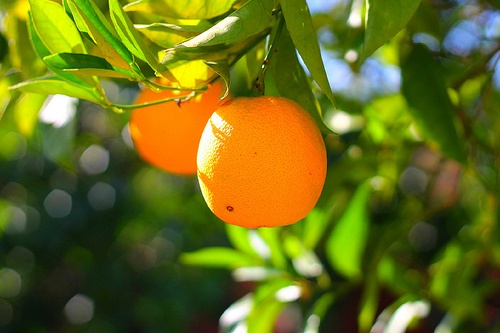There is a strange phenomenon that recurs throughout the Torah: Hashem describes one model of reality and then portrays a different and completely contradictory description. For example, in the first perek of Bereishis, the Torah describes Adam as being created bi’tzelem Elokim, in the image of G-d. This depiction creates an inspiring and divine perception of man and his role in the world. However, in the very next chapter, the Torah describes man as a physical being, created from nothing more than the dirt of the earth- an identical description to the creation of animals. What happened to the Godly and inspiring depiction of man?
Adam and Chava: One or Two?
A similar contradiction occurs with the creation of Chava. The midrash explains that originally Adam and Chava were created as a single androgynous being, connected by the back; man and woman were one. Hashem then split them into two independent, separate beings. This begs the question: if the ideal is for them to be connected, why split them apart? And if they were destined to be split apart, then why initially create them as one? Once again, the successive descriptions differ completely.
Trees Tasting Like Fruit?
Continuing our theme, let us focus on the creation of trees. Hashem states that there shall be fruit trees bearing fruits. The midrash explains this to mean that originally the trees themselves were supposed to taste like their fruits. However, in the actual creation of the trees, we find that the trees do not taste like their fruits. The bark of trees tastes nothing like their sweet fruits. What is the meaning of this recurring pattern? Why are so many elements of creation described in one way before being described in a contradictory fashion?
The Answer: An Ideal, Followed by the Starting Point
As we began to explain in the past, the answer to this theme is one of the most fundamental concepts in Judaism The deep explanation behind this process is explained by the Arizal, the Ramchal, the Vilna Gaon, and many other Jewish thinkers. They expound as follows: Every process contains three stages. The first stage is the high, the inspiration, an experience of perfection and clarity. Next comes the second stage: a complete fall, a loss of everything that was experienced in the first stage. Then we have the third stage, a return to the perfection of the first stage. However, this third stage is fundamentally different than the first. It is the same perfection, the same clarity, but this time it’s a perfection and clarity that you have earned. The first time it was given to you, now you have worked to build it for yourself.
The first stage is a gift, a spiritual high. It’s there to help you experience the goal, the destination. It’s a taste of what you can and hopefully will ultimately accomplish; but it’s not real, it’s given as a gift, and is, therefore, an illusion. It serves only as a guiding force, but can’t compare to the genuine accomplishment of building something yourself. It’s therefore taken away to allow for the second and most important stage: building it yourself, undergoing the work required to attain this growth in actuality, to work for the perfection that you were shown. A gift isn’t real, something chosen and earned is. We’re in this world to choose, to assert our free will, and to create ourselves. Now that we’ve tasted the first stage, we know what we’re meant to choose, what we’re meant to build. The third stage is the recreation of the first stage. While it appears the same, it’s fundamentally different. It’s real, it’s earned, it’s yours. The first stage was a gift, an illusion; the third is the product born of the effort and time you invested. These three stages are the secret behind many spiritual concepts: Avraham, Yitzchak, and Yaakov; Chesed, Din, and Tiferes; Male, Female, and the child created from their bond of oneness. We will develop these themes in the future.
The Ideal Adam
There are many explanations for the clear distinction between the contradicting descriptions of Adam in chapter 1 and chapter 2 of Bereishis. We can explain it beautifully according to our principle. The ideal and goal of man is to become G-dly, to become perfect, all-knowing, all-good, all-kind, to have complete self-control. However, this is the goal, not the starting point. We start out as animalistic beings. A baby is born with no intellectual abilities and no developed character traits. He is selfish, he is the only person who exists, he is the center of his own world, he is the opposite of G-dly. The goal of life is to become G-dly, to actualize his potential to become tzelem Elokim. As we’ve explained in the past, the fetus learns kol ha’Torah kulah (all of the Torah) in the womb, and then loses it upon being born into this world. We are born imperfect so that we can journey through this world on the journey of becoming perfect, recreating and earning what we once received as a gift. Adam was created first as a perfect being, the model of who we each strive to become, before being reduced to the lowly and animalistic being that we begin our lives as.
Adam and Chava: Creating Oneness
The ideal is for man and wife to be one, bonded in an indescribable oneness. Adam and Chava were literally created as one, a physical manifestation of a deeper existential oneness. However, this is the ideal, the destination. Man and wife are not born this way; they are created as two separate beings, with the mission to find each other and create that oneness. The Gemara in Yevamos says that before a man and wife are born, they exist as a single neshama. Only once they are born into the world, they split apart and exist as two distinct beings. The goal is to then wonder the world in search of your soul-mate, choose each other, and then recreate that oneness. Adam and Chava are created as one before being split apart to model the oneness that we are striving towards as husband and wife. (The mechanism of creating oneness will be discussed at a later point.)
Trees Tasting Like the Fruits
A fruit represents the end goal, the destination, the result of a process. The tree represents the process, the stage of growth and becoming. The ideal is for the process, the tree, to be as enjoyable and euphoric as the destination itself, the fruit. However, the world was created in a way where people don’t want to go through the process of becoming great, they simply want to be great. This impatience causes so many people to give up on their journey towards greatness.
This theme touches upon something very deep. The world to come is a place of being, a place of endpoint, whereby you enjoy everything you’ve built and become in this world. The consciousness and person you create in this world is what you will enjoy in the world to come. This world, however, is the place of becoming, the place of process, where you create yourself. The goal is to learn how to enjoy the process itself. When you realize that you are creating your eternity, you are able to enjoy the building process as well. This is what it means for the tree to taste like the fruits. The process is just as important as the destination because you only get to the destination by building your way there. Every part of the process is fundamental, every moment spent right becomes eternal. When you know this, you get to live in Olam Habah, the world to come, while still in this world! Genuine happiness comes only from enjoying the process of becoming. You’ll never be perfect, but you can always become more perfect. Happiness comes from enjoying the process of becoming your best self, fulfilling your unique purpose in life.
The Process of Life
This is the process of life. The ideal is shown, taken away, and it is then our job to journey through life, trying to recreate that ideal. The key is to be inspired by the goal, not depressed by the struggle. We need to understand that our goal is to become g-dly, to create oneness, and to enjoy every single step of the process!







